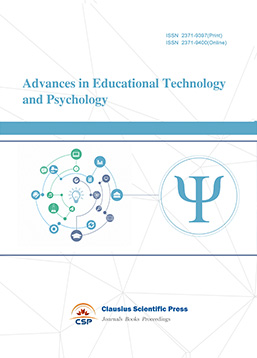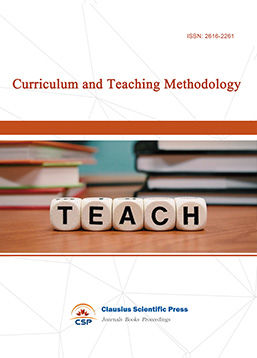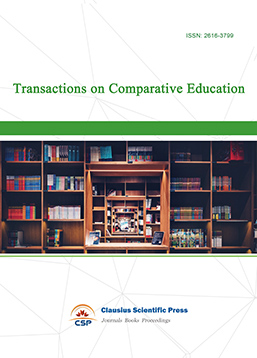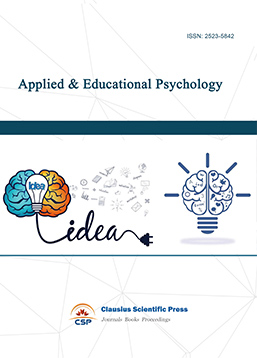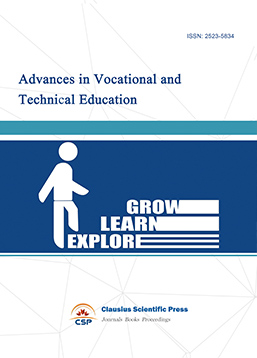Path of Cultivating International Talents in Universities under the Background of Digital Transformation of Education
DOI: 10.23977/aduhe.2024.060806 | Downloads: 32 | Views: 895
Author(s)
Zhiguo Feng 1, Yongping Xiao 1, Xiaoyu Ma 1
Affiliation(s)
1 School of Humanities and Foreign Languages, Qingdao University of Technology, Qingdao, China
Corresponding Author
Zhiguo FengABSTRACT
Against the backdrop of rapid global integration, strengthening international exchanges and cooperation has become an important way for colleges and universities to improve their competitiveness and students' career development capabilities. Cultivating international talents and ensuring the quality of education and employment competitiveness are still issues to be solved in the field of education. This paper explores the impact of digital transformation of education on the cultivation of international talents in colleges and universities, and analyzes its role in improving academic performance, the number of talents cultivated, and the employment rate of graduates. This study uses a mixed research method, using a before-and-after comparison method to analyze the data before and after a university's digital transformation. The research is supplemented by collecting feedback from teachers, students, administrators, and education experts to ensure that the data obtained are both comprehensive and representative. The study mainly focuses on changes in academic performance, the number of international talents trained, and employment rates. Data collection covers changes in academic performance, cross-cultural capabilities, employment status, etc. Quantitative data are analyzed using SPSS, and qualitative data are processed through content analysis. The results show that digital transformation has significantly improved students' academic performance, with an average increase of 9.6 points, and most classes have seen an increase of between 7 and 10 points. After the transformation, class size generally increased by 23% to 36.8%. This change shows the role of digital transformation in increasing student numbers and improving educational outcomes. The employment rate of graduates has also been significantly improved, with the growth rate of employment in all classes ranging from 30% to 58.3%. Overall, the digital transformation of education has effectively promoted the improvement of the quality and quantity of talent training, while enhancing students' employment competitiveness and industry adaptability, and provided strong support for colleges and universities to cultivate compound talents that meet the needs of globalization.
KEYWORDS
Digital Transformation of Education, Internationalization of Universities, Talent Training Paths, Cross-Cultural Communication CapabilitiesCITE THIS PAPER
Zhiguo Feng, Yongping Xiao, Xiaoyu Ma, Path of Cultivating International Talents in Universities under the Background of Digital Transformation of Education. Adult and Higher Education (2024) Vol. 6: 34-41. DOI: http://dx.doi.org/10.23977/aduhe.2024.060806.
REFERENCES
[1] Finardi K R, Furtado Guimaraes F. Internationalization and the Covid-19 pandemic: challenges and opportunities for the global south[J]. Journal of Education, Teaching and Social Studies, 2020, 2(4): 1-15.
[2] De Wit H, Altbach P G. Internationalization in higher education: Global trends and recommendations for its future [J]. Policy Reviews in Higher Education, 2021, 5(1): 28-46.
[3] Mittelmeier J, Rienties B, Gunter A, et al. Conceptualizing internationalization at a distance: A "third category" of university internationalization[J]. Journal of Studies in International Education, 2021, 25(3): 266-282.
[4] Buckner E, Clerk S, Marroquin A, et al. Strategic benefits, symbolic commitments: How Canadian colleges and universities frame internationalization[J]. Canadian Journal of Higher Education, 2020, 50(4): 20-36.
[5] Guo Y, Guo S, Yochim L, et al. Internationalization of Chinese higher education: Is it westernization?[J]. Journal of Studies in International Education, 2022, 26(4): 436-453.
[6] Zapp M, Lerch J C. Imagining the world: Conceptions and determinants of internationalization in higher education curricula worldwide[J]. Sociology of Education, 2020, 93(4): 372-392.
[7] Ramaswamy M, Marciniuk D D, Csonka V, et al. Reimagining internationalization in higher education through the United Nations sustainable development goals for the betterment of society[J]. Journal of Studies in International Education, 2021, 25(4): 388-406.
[8] Jampaklay A, Penboon B, Lucktong A. Internationalization of higher education in Thailand: Promises and reality [J]. Kasetsart Journal of Social Sciences, 2022, 43(1): 183–193.
[9] Li J, Xue E. Returnee faculty responses to internationalizing "academic ecology" for creating world-class universities in China’elite universities[J]. Higher Education, 2021, 81(5): 1063-1078.
[10] Tight M. Globalization and internationalization as frameworks for higher education research[J]. Research Papers in Education, 2021, 36(1): 52-74.
[11] Li B. The construction path of innovation and entrepreneurship education in secondary vocational schools from the perspective of maker era[J]. Int J New Dev Educ, 2021, 3(2): 50-54.
[12] Oliveira K K S, De Souza R A C. Digital transformation towards education 4.0[J]. Informatics in Education, 2022, 21(2): 283-309.
[13] Rasoolimanesh S M, Ringle C M, Sarstedt M, et al. The combined use of symmetric and asymmetric approaches: partial least squares-structural equation modeling and fuzzy-set qualitative comparative analysis[J]. International Journal of Contemporary Hospitality Management, 2021, 33(5): 1571-1592.
[14] Samosir C M, Herman T. Students’Ways Of Understanding And Thinking Based On Harel'S Theory In Solving Set Problems[J]. JOHME: Journal Of Holistic Mathematics Education, 2023, 7(2): 169-179.
[15] Kocaman B. The Effect of Coding Education on Analytical Thinking of Gifted Students[J]. International Journal of Educational Methodology, 2023, 9(1): 95-106.
| Downloads: | 22176 |
|---|---|
| Visits: | 1244102 |

 Download as PDF
Download as PDF